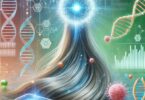A group of 51 researchers decipher how the most common leukemia genome works. Using state-of-the-art sequencing techniques and advanced computational biology tools, they have been able to make a detailed map of the functioning of the leukemia genome. In conclusion, through the map they have identified that the genome contains a total of 12 different functions. They have also been able to observe how the map of leukemia changes compared to the map of healthy cells, and how leukemias are able to create a very efficient molecular infrastructure to grow without control. In addition, they have discovered that only three families of proteins seem to be responsible for this change, so that the action of these three families of proteins can be inhibited with drugs that are already being developed.
In this sense, it can be said that this detailed map not only allows us to better understand leukemia at the molecular level, but also offers a great source of information for other researchers to find a better treatment for patients.
Learn more about health in Pharmamedic.








